
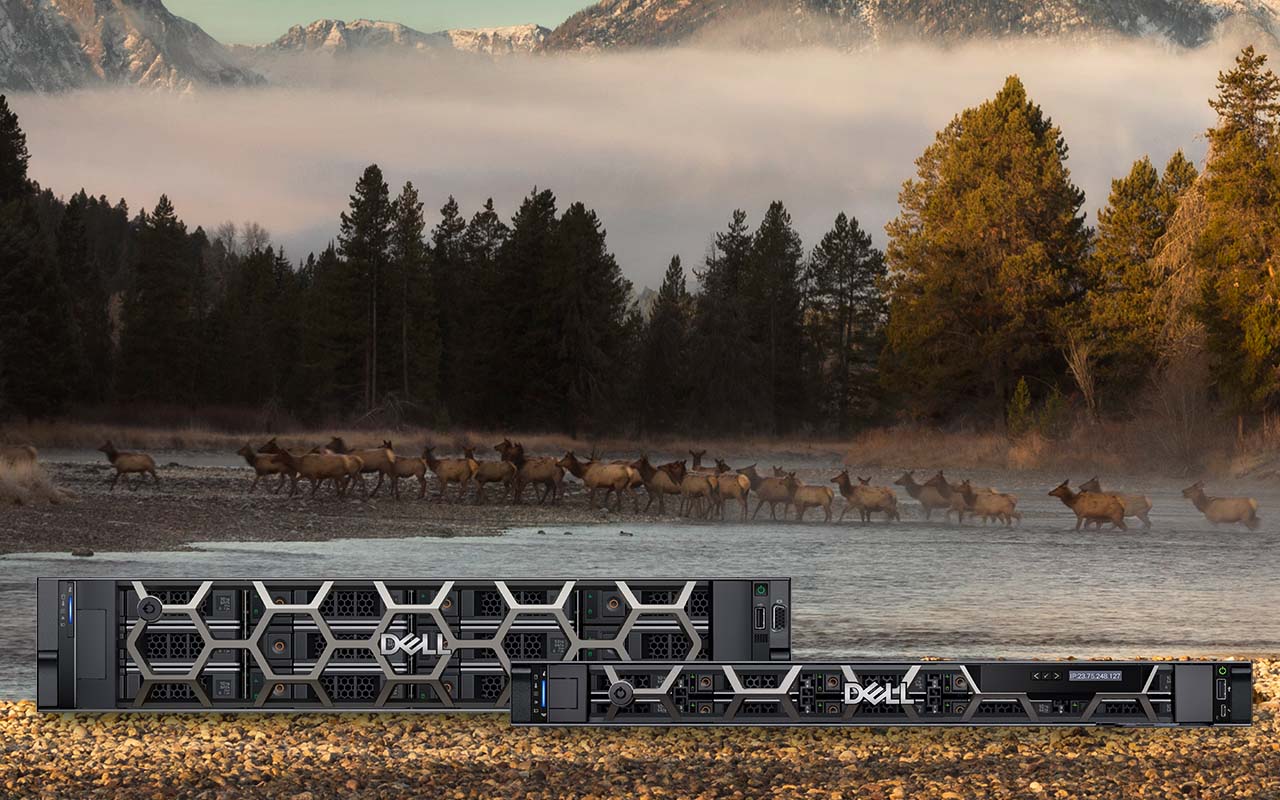
Dell’s PowerEdge XR8000 for Telecom/Edge Compute
Fri, 31 Mar 2023 17:38:53 -0000
|Read Time: 0 minutes
The design goals of a Telecom-inspired Edge Server are to not only to complement existing installations such as traditional Baseband Units (BBUs) all the way out to the cell site, but to eventually replace the purpose-built proprietary platforms with a cloud-based and open solution. The new Dell Technologies PowerEdge XR8000 achieves this goal, in terms of form factor, operations, and environmental specifications.
 Figure 1. XR8000 2U Chassis
Figure 1. XR8000 2U Chassis
The XR8000 is composed of a 2U, short depth, 400mm class Chassis with options to choose from 1U or 2U half-width hot-swappable Compute Sleds with up to 4 nodes per chassis. The XR8000 supports 3 sled configurations designed for flexible deployments. These can be 4 x 1U sleds, 2 x 1U and 1 x 2U sleds or 2 x 2U sleds.
The Chassis also supports 2 PSU slots that can accommodate up to 5 power capacities, with both 120/240 AC and -48 VDC input powers supported.
The 1U and 2U Compute Sleds are based on Intel’s 4th Generation Xeon Scalable Processors, up to 32 cores, with support for both Sapphire Rapids SP and Edge Enhanced (EE) Intel® vRAN Boost processors. Both sled types have 8 x RDIMM slots and support for 2 x M.2 NVMe boot devices with optional RAID1 support, 2 optional 25GbE LAN-on-Motherboard (LoM) ports and 8 Dry Contact Sensors though an RJ-45 connector.
The 1U Compute Sleds adds support for one x16 FHHL (Full Height Half Length) Slot (PCIe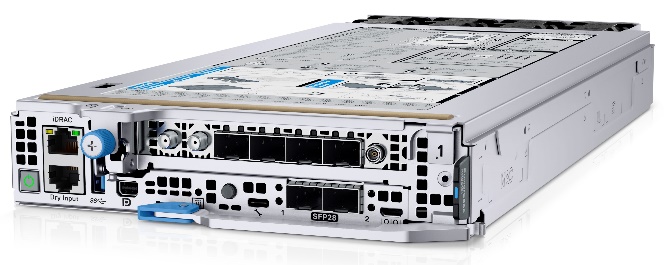 Figure 2. XR8610t 1U Compute Sled Gen4 or Gen5).
Figure 2. XR8610t 1U Compute Sled Gen4 or Gen5).
The 2U Compute Sled builds upon the foundation of the 1U Sled and adds support for an additional two x16 FHHL slots.
These 2 Sled configurations can create both dense compute and dense I/O configurations. The 2U Sled also provides the ability to accommodate GPU-optimized workloads.
This sledded architecture is designed for deployment into traditional Edge and Cell Site Environments, complementing or replacing current hardware and allowing for the reuse of existing infrastructure. Design features that make this platform ideal for Edge deployments include: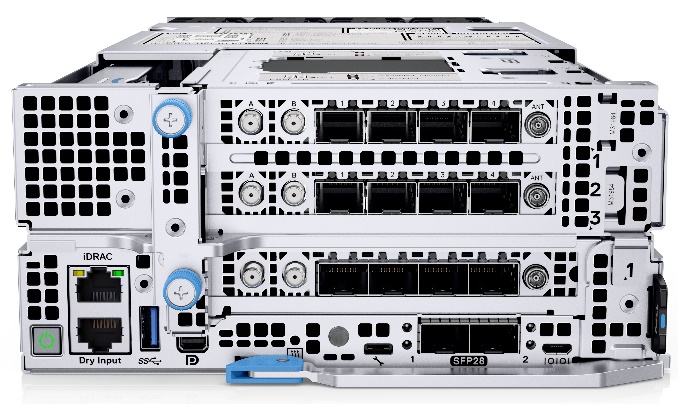 Figure 3. XR8620t 2U Compute Sled
Figure 3. XR8620t 2U Compute Sled
- Improved Thermal Performance
- Efficient maintenance operations
- Reduced power cabling
- Simplified generational upgrades
Let’s take a look at each one of these.
Improved thermal performance
The XR8000 is designed for NEBS Level 3 compliance, which specifies an operational temperature range of -5oC to +55oC. However, creating a server that operates efficiently through this whole temperature range can require some “padding” on either side. Dell has designed the XR8000 to operate at both below -5oC and above +55oC. This creates a server that operates comfortably and efficiently in the NEBS Level 3 range.
On the low side of the temperature scale, as discussed in the sixth blog in this series, commercial-grade components are typically not specified to operate below 0°C. New to Dell PowerEdge design, is the XR8000 sled pre-heater controller, which on cold start where the temperature is below -5°C, will internally warm the server up to the specified starting temperature before applying power to the rest of the server.
On the high side of the temperature scale, Dell is introducing new, advanced heat sink technologies to allow for extended operations above +55°C. Another advantage of this new class of heat sinks will be in power savings, as at more nominal operating temperatures the sled’s cooling fans will not have to spin at as high a rate to dissipate the equivalent amount of heat, consuming fewer watts per fan.
Efficient maintenance operations
 Figure 4. XR8000 Front View. All Front Maintenance
Figure 4. XR8000 Front View. All Front Maintenance Figure 5. XR8000 Rear View. Nothing to see here.
Figure 5. XR8000 Rear View. Nothing to see here.
In many Cell Site deployments, access to the back of the server is not possible without pulling the entire server. This is typical, for example, in dedicated Site Support Cabinets, with no rear access, or in Concrete Huts where racks of equipment are located close to the wall, allowing no rear aisle for maintenance.
Maintenance procedures at a Cell Site are intended to be fast and simple. The area where a Cell Site Enclosure sits is not a controlled environment. Sometimes, there will be a roof over the enclosure to reduce solar load, but more times than not it’s exposed to everything Mother Nature has to offer. So the FRU (Field Replaceable Unit) maintenance needs to be simple, fast, and quickly bring the system back into full service. For the XR8000, the 2 basic FRUs are the Compute Sled and the PSUs. Simple and fast not only restore service more quickly, but the shorter maintenance cycle allows more sites to be serviced by the same technicians, saving both time and money.
Reduced power cabling
Up to four compute sleds are supported in the XR8000 Chassis, supplied by two 60mm PSUs. If you looked at a traditional, rackmount server equivalent there would be either 4U of single socket or 2U-4U of dual-socket servers. Assuming redundant PSUs for each server, there would be between four to eight PSUs for equivalent compute capacity and between four to eight more power cables. This consolidation of PSUs and cables not only reduces the cost of the installation, due to fewer PSUs but also reduces the cabling, clutter, and Power Distribution Unit (PDU) ports used in the installation.
Simplified generational upgrades
With the release of Intel’s new 4th Generation Xeon Scalable Processor, a server in 2023 can execute the equivalent of multiple servers from only 10 years ago. It can be expected that not only will processors efficiently continue to improve, but greater capabilities and performance in peripherals, including GPUs, DPU/IPUs, and Application Specific Accelerators will continue this processing densification trend. The XR8000 Chassis is designed to accommodate multiple generations of future Compute Sleds, enabling fast and efficient upgrades while keeping any service disruptions to a minimum.
Conclusion
It is said that imitation is the sincerest form of flattery. In this respect, our customers have requested, and Dell has delivered the XR8000, which is designed in a compact and efficient form factor with similar maintenance procedures as found in the existing, deployed RAN infrastructure.
Building upon a Classical BBU architecture, the XR8000 adopts an all-front maintenance approach with 1U and 2U Sledded design that makes server/PSU installation and upgrades quick and efficient.
Related Blog Posts

Dell Shifts vRAN into High Gear on PowerEdge with Intel vRAN Boost
Thu, 17 Aug 2023 18:33:05 -0000
|Read Time: 0 minutes
What has past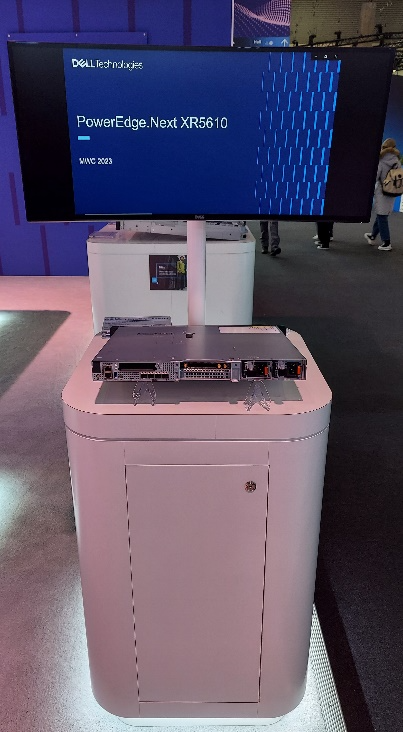
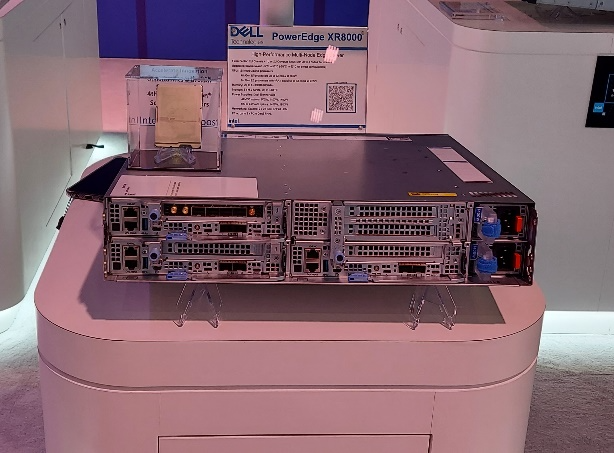
Mobile World Congress 2023 was an important event for both Dell Technologies and Intel that marked a true foundational turning point for vRAN viability. At this event, Intel launched its 4th Gen Intel Xeon Scalable processor, with Intel vRAN Boost, and Dell announced two new ruggedized server platforms, the PowerEdge XR5610 and XR8000, with support for vRAN Boost CPU SKUs.
The features and capabilities of the PowerEdge XR5610 and XR8000 have been highlighted in previous blogs and both have been available to order since May 2023. These new ruggedized servers have been evaluated and adopted as Cloud RAN reference platforms by NEPs such as Samsung and Ericsson. Short-depth, NEBS certified and TCO-optimized, these servers are purpose-built for the demanding deployment environments of Mobile Operators and are now married to the Intel vRAN Boost processor to provide a powerful and efficient alternative to classical appliance options.
What is now
Starting August 16, 2023, the 4th Gen Intel Xeon Scalable processor with Intel vRAN Boost is available to order with the PowerEdge XR5610 and XR8000. These two critical pieces of the vRAN puzzle have been brought together and are now available to order from our PowerEdge XR Rugged Servers page with the following CPU SKUs.
| CPU SKU | Cores | Base Freq. | TDP |
|---|---|---|---|
6433 N | 32 | 2.0 | 205 W |
5423 N | 20 | 2.1 | 145 W |
6423 N | 28 | 2.0 | 195 W |
6403 N | 24 | 1.9 | 185 W |
Table 1. Intel vRAN Boost SKUs available today from Dell
Additional details on these new CPU SKUs and all 4th Gen Intel® Xeon® Scalable processors can be found on the Intel Ark Site.
These processors, with Intel vRAN Boost, integrate key acceleration blocks for 4G and 5G Radio Layer 1 processing into the CPU. These include:
- 5G Low Density Parity Check (LDPC) encoder/decoder
- 4G Turbo encoder/decoder
- Rate match/dematch
- Hybrid Automatic Repeat
- Request (HARQ) with access to DDR memory for buffer management
- Fast Fourier Transform (FFT) block providing DFT/iDFT for the 5G Sounding Reference Signal (SRS)
- Queue Manager (QMGR)
- DMA subsystem
One of the most interesting features of the vRAN Boost CPU is how this acceleration block is accessed by software. Although it is integrated on-chip with the CPU, the vRAN Boost block still presents itself to the Cores/OS as a PCIe device. The genius of this approach is in software compatibility. Virtual Distributed Unit (vDU) applications written for the previous generation HW will access the new vRAN Boost block using the same standardized, open APIs that were developed for the previous generation product. This creates a platform that can support past, present (and possibly future) generations of Intel’s vRAN optimized HW with the same software image.
What is to come
Prior to vRAN Boost, the reference architecture for vDU was a 3rd Gen Intel Xeon Scalable processor along with a FEC/LDPC accelerator, such as the Intel vRAN Accelerator ACC100 Adapter, and most today’s vRAN deployments can be found with this configuration. While the ACC100 does meet the L1 acceleration needs of vRAN it does this at a price, in terms of the space of an HHHL PCIe card and at the cost of an additional 54 W of power consumed (and cooled). In addition, using a PCIe interface will further reduce additional I/O expansion options and impact the ability to scale in-chassis due to slot count – both of which are alleviated with vRAN Boost.
With the new Intel vRAN Boost processors’ fully integrated acceleration, Intel has taken a huge step in closing the performance gap with purpose-built hardware, while remaining true to the “Open” in O-RAN.
Intel says that, compared to the previous generation, the new Intel vRAN Boost processor delivers up to 2x capacity and ~ 20% compute power savings compared to its previous generation processor with ACC100 external acceleration. At the Cell Site, where every watt is counted, operators are constantly exploring opportunities to reduce both power consumption and the associated “cooling tax” of keeping the HW in its operational range, typically within a sealed environment.
Dell and Intel have worked together to provide early access Intel vRAN Boost provisioned XR5610s and XR8000s to multiple partners and customers for integration, evaluation, and proof-of-concepts. One early evaluator, Deutsche Telekom, states:
“Deutsche Telekom recently conducted a performance evaluation of Dell’s PowerEdge XR5610 server, based on Intel’s 4th Gen Intel Xeon Scalable processor with Intel vRAN Boost. Testing under selected scenarios concluded a 2x capacity gain, using approximately 20% less power versus the previous generation. We aim to leverage these significant performance gains on our journey to vRAN.”
-- Petr Ledl , Vice President of Network Trials and Integration Lab and Access Disaggregation Chief Architect, Deutsche Telekom AG
With such a solid industry foundation of the telecom-optimized PowerEdge XR5610s/XR8000s, and 4th Gen Intel Xeon Scalable processors with Intel vRAN Boost, expect to see accelerated deployments of open, vRAN-based infrastructure solutions.
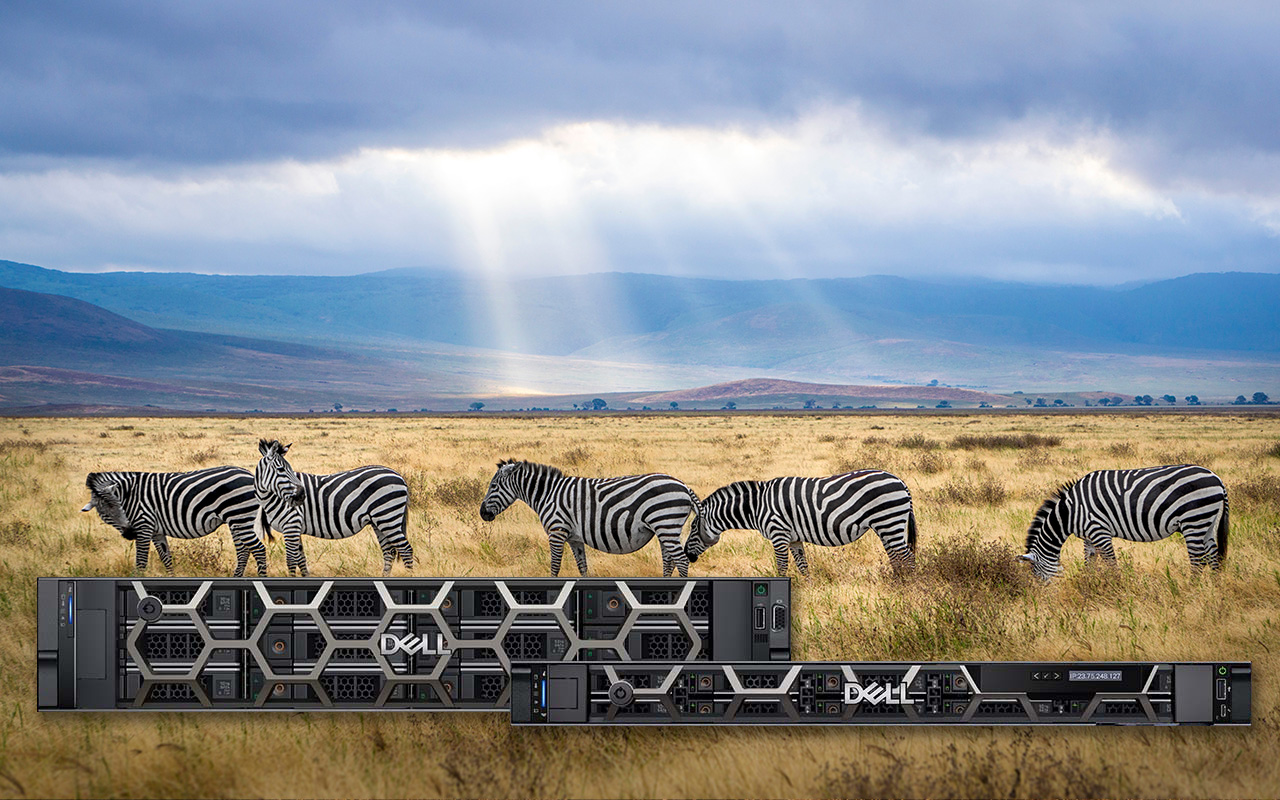
Dell’s PowerEdge XR4000 for Telecom/Edge Compute
Wed, 08 Feb 2023 18:04:19 -0000
|Read Time: 0 minutes
Compute capabilities are increasingly migrating away from the centralized data center and deployed closer to the end user—where data is created, processed, and analyzed in order to generate rapids insights and new value.
Dell Technologies is committed to building infrastructure that can withstand unpredictable and challenging deployment environments. In October 2022, Dell announced the PowerEdge XR4000, a high-performance server, based on the Intel® Xeon® D Processor that is designed and optimized for edge use cases.

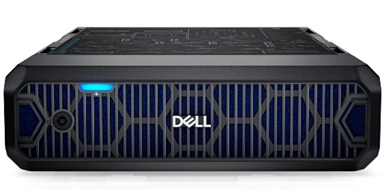

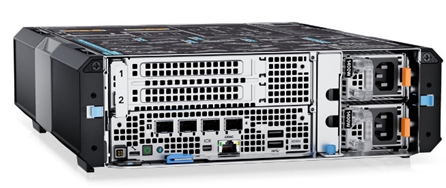
Figure 1. Dell PowerEdge XR4000 “rackable” (left) and “stackable” (right) Edge Optimized Servers
The PowerEdge XR4000 is designed from the ground up with the specifications to withstand rugged and harsh deployment environments for multiple industry verticals. This includes a server/chassis designed with the foundation requirements of GR-63-CORE (including -5C to +55C operations) and GR1089-CORE for NEBS Level 3 and GR-3108 Class 1 certification. Designed beyond the NEBS requirements of Telecom, the XR4000 also meets MIL-STD specifications for defense applications, marine specifications for shipboard deployments, and environmental requirements for installations in the power industry.
The XR4000 marks a continuation of Dell Technologies’ commitment to creating platforms that can withstand the unpredictable and often challenging deployment environments encountered at the edge, as focused compute capabilities are increasingly migrating away from the Centralized Data Center and deployed closer to the End User, at the Network Edge or OnPrem.
Attention to a wide range of deployment environments creates a platform that can be reliably deployed from the Data Center to the Cell Site, to the Desktop, and anywhere in between. Its rugged design makes the XR4000 an attractive option to deploy at the Industrial Edge, on the Manufacturing Floor, with the power and expandability to support a wide range of computing requirements, including AI/Analytics with bleeding-edge GPU-based acceleration.
The XR4000 is also an extremely short depth platform, measuring only 342.5mm (13.48 inches) in depth which makes it extremely deployable into a variety of locations. And with a focus on deployments, the XR4000 supports not only EIA-310 compatible 19” rack mounting rails, but also the “stackable” version supports common, industry-standard VESA/DIN rail mounts, with built-in latches to allow the chassis to be mounted on top of each other, leveraging a single VESA/DIN mount.
Additionally, both Chassis types have the option to include a lockable intelligent filtered bezel, to prevent unwanted access to the Sleds and PSUs, with filter monitoring which will create a system alert when the filter needs to be changed. Blocking airborne contaminants, as discussed in a previous blog, is key to extending the life of a server by reducing contaminant build-up that can lead to reduced cooling performance, greater energy costs, corrosion and outage-inducing shorts.
The modular design of the XR4000, along with the short-depth Compute Sled design creates an easily scalable solution. Maintenance procedures are simplified with an all-front-facing, sled-based design.
Conclusion
Specifying and deploying Edge Compute can very often involve selecting a Server Solution outside of the more traditional data center choices. The XR4000 addresses the challenges of moving to compute to the Edge with a compact, NEBS-compliant, and ruggedized approach, with Sled-based servers and all front access, reversible airflow and flexible mounting options, to provide ease of maintenance and upgrades, reducing server downtime and improving TCO.


